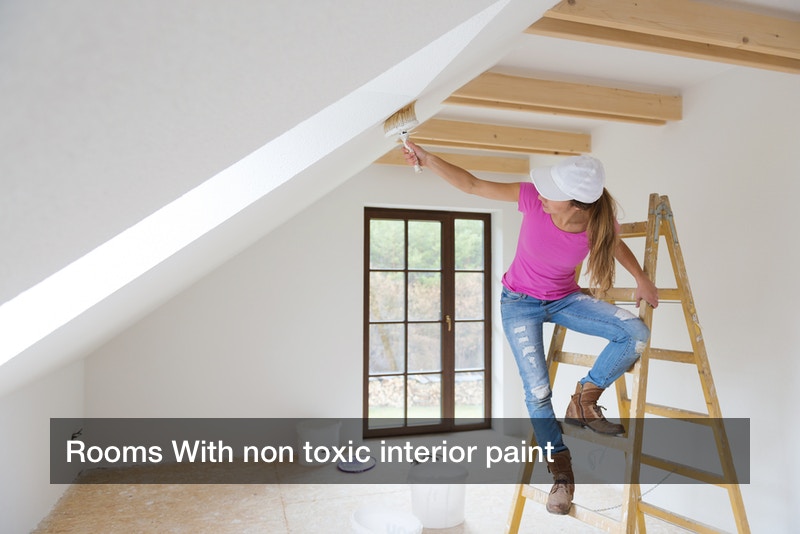

Rooms With non toxic interior paint
Regardless of what room you currently occupy, whether it is a hotel room, your room, or even the room of a friend, the thing to take into major account is that fact that it has been painted with a non toxic interior paint. That’s right. How you breathe or experience the way the room feels is determined by what type of paint is used in the room. This is why a room should have non toxic interior paint incorporated into the interior design that formulated its conception. The last thing anyone wants to put up with when they enter a room is the simple fact that they might have to inhale floor paint or eggshell paint that might prove to be hazardous. It’s not exaggerated guess when studies say things like how levels of several organics average up two to five times higher indoors than they do outdoors. When inhaled these same organics can contribute to several health problems, and several of these health problems include examples such as asthma or rhinitis. Having a room with non toxic interior paint in the design is essential to the health of anyone entering the room, given that inhaling paints with certain odors, as opposed to an odorless paint can be a major difference.
Why Having Odorless Painted Rooms Matters
Any room a person enters determines their health to the extent of how well they can breath while presently being inside the said room. This is more crucial to know, especially for individuals who are traveling, given that in their own home, if the air in the room they own is unbreathable, then they can simply switch to applying a non toxic interior paint, which will make the room essentially more allergy friendly. It isn’t the same situation for anyone who goes to a hotel room, only to then discover that paint used i the room is not at all an eco friendly paint. Situations such as these only go back to studies in which a Cornell University Survey Research Institute, demonstrated that over 83% of travelers say they would choose an allergy-friendly room if they had the option. A similar study illustrated how 59% of travelers would rather select one hotel over another based on the availability of allergen-friendly rooms.
Sadly, because travel has many costs of which the people traveling must accumulate, there are so many factors of which they can attend to. In the subject matter of dealing with a room with potentially toxic paint, then it is vital to take into account what can be afforded. Often times, changing rooms will not be a viable option for the budget they already have in place. This is why hotel managers should be responsible on how clean a hotel room really is. As mentioned before, with a homeowner, the issue is far less crucial to consider, given that if the room a person was personally involved in painting turns out to be toxic, then it could be fixed by placing paint that didn’t give toxic fumes.
In Conclusion
It matters not whether the room in question is a hotel or homeowner’s room. The main factor to take into account is the simple fact that the room needs to be eco friendly. In order for a room to be eco friendly, then the paint has to be of a non toxic kind. If it isn’t, then the well-being of the person is put at risk, especially if that person happens to be a child. Anyone reading this should take the fact that a study showed children that had bedroom PGE concentrations in the top 25% had a 100% higher likelihood of having asthma, a 150% higher likelihood of having eczema, and a 320% higher likelihood of having rhinitis. This isn’t a statistic to play around with.
